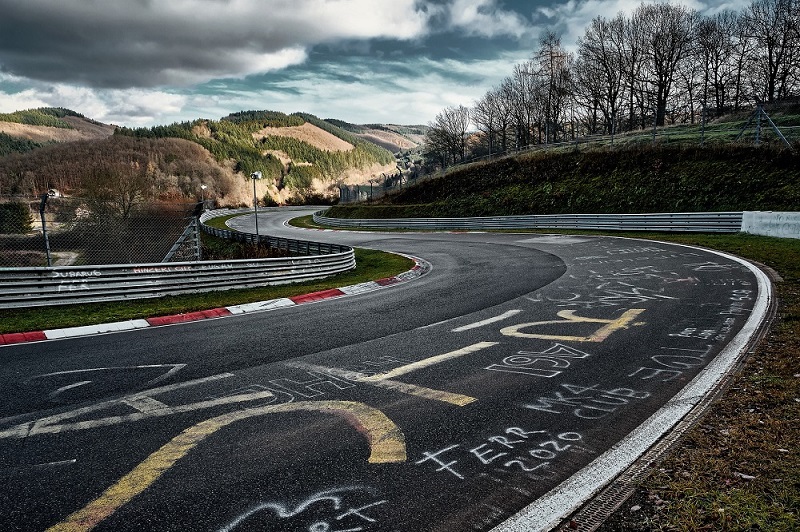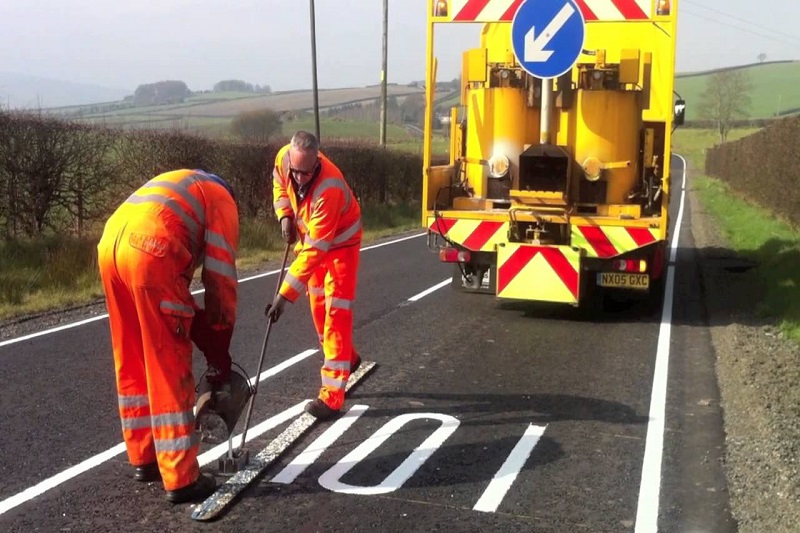Let’s take a moment to consider something we often take for granted. The roads we drive on have a secret language, a crucial component of traffic control, and are vastly important to our safety. Have you ever stopped to think about the role of those ubiquitous lines, arrows, and symbols painted on the streets? This blog seeks to decode the language of pavement marking and discuss their part in traffic management.
Pavement marking are much more than just paint on asphalt. They are part of a complex and detailed system designed to regulate traffic flow and promote road safety. From single lines to double lines, crosses to arrows, each marking has significant meaning, each color representing different instructions or warnings.
In today’s post, we delve into the world of these often overlooked but essential facets of urban design. Each line on the road has been meticulously planned and strategically placed, just one element in the intricate ballet of traffic management. Join us as we trace the lines of traffic regulation, understanding the vital role played by pavement marking.
The Function of Pavement Marking
Why do we have all these lines on the roads? Pavement marking serve two primary purposes – to regulate traffic and guide drivers. A single stroke of paint provides guidance about lane usage and indicates the correct path for motorists. They also supplement road signs and signals, reinforcing the commands via visual cues.
Pavement marking is responsible for promoting smooth traffic flow, imparting crucial information quickly and efficiently. For instance, they help distinguish pedestrian crossings or bike paths, making roads safer for all users. These simple yet effective marking convey information consistently, reducing the scope for confusion or misinterpretation while driving.
Different colors and formats denote different instructions, employing universally understood symbols and patterns. White lines often regulate regular traffic movements, while yellow lines warn of potential hazards or restrictions. Translating this coded language amplifies understanding and respect for traffic norms, which in turn enhance overall road safety.
The Evolution of Pavement Marking
Pavement marking wasn’t always part of our roads. It was not until the advent of the automobile and the subsequent increase in road traffic that the need for such markings arose. Early highway engineers pioneered the pavement marking system, gradually evolving it to match the ever-increasing complexity of road networks.
The 1917 Detroit Safety Convention holds significance as the first recorded instance of pavement marking. Lines have greatly evolved since then, adapting to new circumstances, vehicles, and transportation trends. Todays comprehensive system includes arrows, crosswalks, bus lanes, and even textured rumble strips.
From there on, international bodies like the United Nations Economic Commission for Europe have standardized pavement marking, ensuring global uniformity. They’ve evolved from mere markers to integral elements of urban planning and design, shaping the landscape of our cities.
The Importance of Visibility
What horror would it be to drive on unmarked roads, especially at night or during adverse weather conditions? Pavement marking are the unseen guardian angels, their value often realized in their absence. They greatly improve visibility, guiding motorists safely on their journeys.
Materials used in pavement marking are designed with high retro-reflectivity. This means that light striking the surface is reflected back to its source, making the lines highly visible even in poor lighting conditions. Special provisions are also made for wet weather conditions, ensuring the lines remain visible even on rainy or snowy days.
Investing in high-quality, reflective materials used for these markings might seem insignificant. Still, it enhances overall road safety, proving to be invaluable in preventing accidents and improving driving conditions.

Pros and Cons of Pavement Marking
Like any other element of design and planning, pavement marking come with their own set of strengths and weaknesses. Their most substantial advantage lies in their simplicity and high level of effectiveness. They are a cost-effective solution, compared to physical barriers or signage, for regulating traffic and ensuring safety.
However, these markings do require regular maintenance and renewal. Over time, wear and tear and exposure to harsh weather conditions may gradually reduce their visibility. Vehicular traffic continually subjects them to degenerative forces, necessitating regular inspection and upkeep.
While they offer immense benefits, relying solely on pavement marking may lead to potential risks. For instance, in extremely adverse weather conditions, their visibility may be severely compromised, creating the necessity for other traffic control mechanisms as backups.
The Future of Pavement Marking
With the advent of self-driving vehicles, pavement marking face an intriguing future. Autonomous vehicles rely on them for navigation and safety, pushing the demand for more precision and detail in pavement marking. The development of smart markings, equipped with the ability to communicate with vehicles dynamically, is on the horizon.
Simultaneously, the importance of sustainable raw materials is gaining recognition. Researchers are exploring eco-friendly solutions that can replace current marking materials without compromising their effectiveness. The pavement marking of the future will be smarter, more sustainable, and interactive than ever before.
Concluding Thoughts
Pavement marking does far more than meet the eye. They carry the burden of maintaining order on our roads, helping motorists navigate safely, and contributing to a structured traffic system. In essence, they are representative of the complex language of urban design, impacting every city’s traffic scenario in one stroke.
While they may require regular maintenance and updates, the value they add to our daily commute is undeniable. They continue to evolve, helping the urban landscape adapt to changes in transportation trends and technology. The road markings of tomorrow will pave the way for smarter cities while continuing to underscore road safety.
Next time you hit the road, take a moment to appreciate the silent yet significant heroes of our travel – the lines, symbols, and arrows that guide us on our journey. Drive safely and remember each line matters. You’re not only following a painted line – but you’re also part of an intricately choreographed dance of traffic management.
